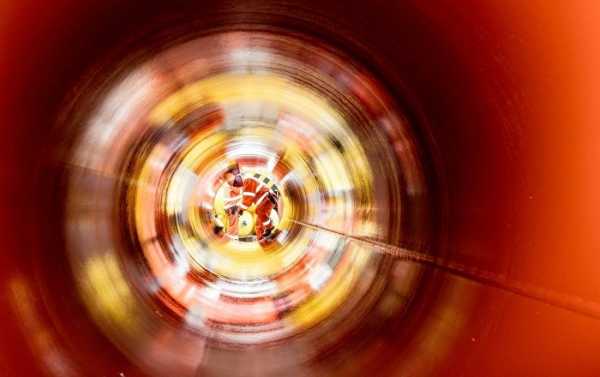
On Friday, US President Donald Trump signed the FY2020 National Defence Authorisation Act into law, with its provisions including sanctions against the Nord Stream 2 gas pipeline project. A day later, the Treasury confirmed that the restrictions had snapped into place.
The year-long US effort to stop Nord Stream 2’s completion reached its peak on Friday as President Trump signed legislation threatening companies engaged in the pipeline’s construction with sanctions. The past week has seen a flurry of back-and-forth statements about the sanctions’ implications and about where the project goes from here. The refresher below will bring you up to speed.
- The US began openly threatening companies involved in the joint Russian-European energy project in January. In a letter to Germany’s BASF and Uniper, US Ambassador to Germany Richard Grenell warned the companies may face sanctions if they didn’t drop out of the Nord Stream 2 project. At the time, Berlin dismissed the threats as a ‘provocation’, while Moscow panned Washington over its ‘scaremongering.’
- In the meantime, construction continued, as did negotiations between Nord Stream 2 AG and Denmark, the last country holding out approval for pipeline construction through its territorial waters. In late October, Copenhagen finally granted a permit for construction on its continental shelf. The same month, Gazprom confirmed that over 80 percent of the 1,222 km pipeline had been completed.
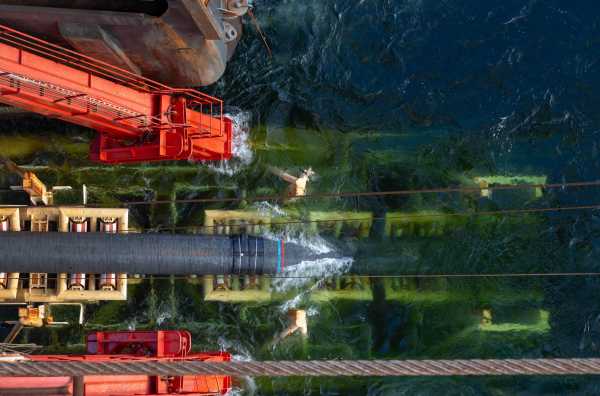
Nord Stream 2 pipeline being laid.
- In November, with the pipeline’s completion becoming imminent, US lawmakers supported tacking sanctions legislation onto the 2020 National Defence Authorisation Act (NDAA). In early December, the State Department warned that Washington might resort to sanctions to stop Nord Stream 2 if its diplomatic campaign fails to persuade its European partners. https://sputniknews.com/us/201911241077388359-window-is-closing-us-lawmakers-push-for-nord-stream-2-sanctions-as-project-nears-completion/
- The NDAA passed the Democrat-led House on December 12. Five days later, it passed the Republican-held Senate, moving on to the president’s desk for signature. Donald Trump signed the bill into law on December 20, with the US Treasury confirming Saturday that the Nord Stream 2 restrictions had stepped into effect.
- Two days before Trump signed the bill, Senators Ted Cruz and Ron Johnson sent a letter to Allseas Group SA, the Switzerland-based contractor installing Nord Stream 2’s deep-sea pipelines, urging the company to stop its participation in the project “immediately” or face “crushing and potentially fatal legal and economic” sanctions.
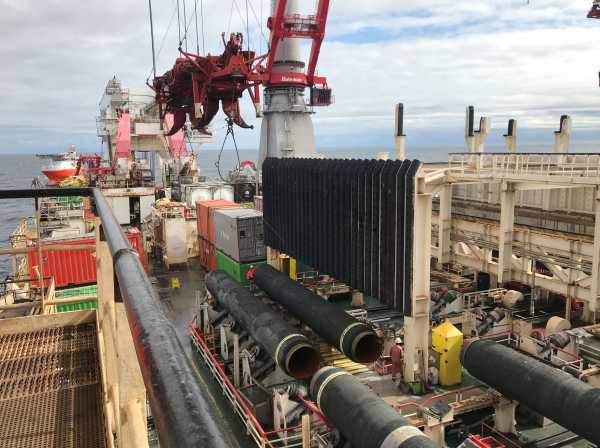
Allseas’ deep sea pipe laying ship Solitaire lays pipes for Nord Stream 2 pipeline in the Baltic Sea September 13, 2019. Picture taken September 13, 2019
- The same day, Berlin offered its first hint as to how it might bypass the US restrictions. Oliver Hermes, chairman of the powerful German Eastern Business Association, called on Brussels and Berlin to “promptly develop instruments” to shield Nord Stream 2 from Washington’s sanctions. Later in the day, Merkel commented on the bill in the Bundestag, marking Berlin’s opposition to US “extraterritorial sanctions,” but adding that Berlin had no intention to impose counter-sanctions at this stage.
- Also on Wednesday, Kremlin spokesman Dmitry Peskov commented on the matter, describing the US sanctions as “a perfect example of unfair competition” and an attempt to force Europe to buy more expensive American LNG. Peskov added that sanctions or no sanctions, Moscow expects the project to be completed.
- German Foreign Minister Heiko Maas chimed in on Thursday, telling a German broadcaster that “European energy policy is decided in Europe, not the US,” and saying that Berlin saw US restrictions as “unacceptable” interference in European affairs.
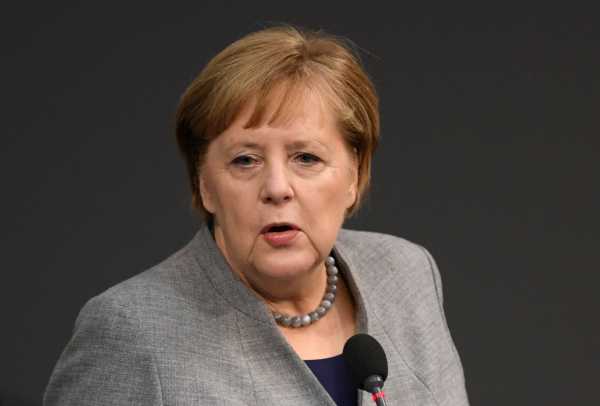
German Chancellor Angela Merkel attends a session of lower house of parliament, the Bundestag, in Berlin, Germany, December 18, 2019
- On Saturday, after the NDAA was signed into law, Allseas announced the suspension of its participation in the Nord Stream 2 project, saying it would now “expect guidance” from the relevant US authorities on how to disengage.
- The Russian Foreign Ministry blasted the US attempt at bullying, promising to carry on with all of its economic projects, and rebuking Washington for trying to “forbid” creditworthy countries from developing the real sectors of their economies while carrying a bloated $22 trillion debt.
- Also Saturday, Nord Stream 2 AG issued a statement in which it promised to continue working with its partners to complete the pipeline as soon as possible, while a German government spokesman and Germany’s vice-chancellor Olaf Scholz again indicated Berlin’s “rejection” of US “extraterritorial sanctions” targeting “German and European companies.”
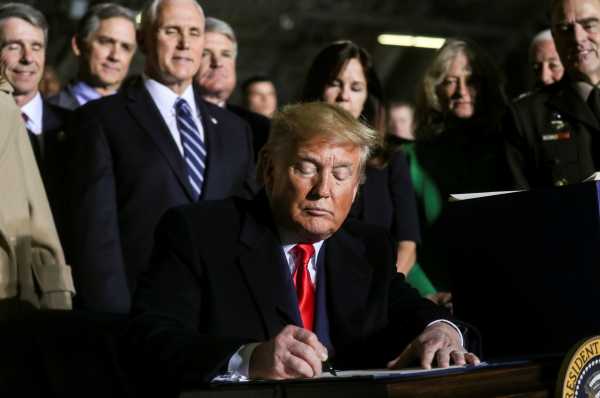
U.S. President Donald Trump signs the “National Defense Authorization Act for Fiscal Year 2020”
- US Ambassador Richard Grenell responded to the criticism in a Bild interview on Sunday, calling the sanctions “a very pro-European decision” and saying he had received calls all day from European diplomats “thanking” him for the US action.
- On Sunday, in an interview with Russian television, Russian Foreign Minister Sergey Lavrov reiterated Moscow’s commitment to finish the project, and explained why Nord Stream 2 can’t be stopped. “It will be completed despite all these threats. Firstly, I am convinced that the Europeans understand their commercial interest. Secondly, they are interested in ensuring long-term energy security. And thirdly, of course, they have been humiliated. We have heard statements, including from Berlin, which show that our European partners still have a sense of dignity,” he said.
Sourse: sputniknews.com
0.00 (0%) 0 votes


































